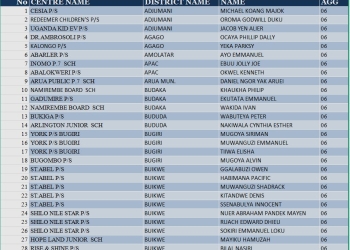
In a significant move towards shaping the future of the Greater Kampala area, the Ugandan government has released a comprehensive draft plan for the region’s urban development.
“The general public is hereby informed that the draft Greater Kampala Metropolitan Area Integrated Urban Development Master Plan (GKMA-IUDMP) is on deposit as provided for in Section 20 (1)-(2) of the Physical Planning Act, 2010,” announced Amanda Ngabirano, Chairperson of the National Physical Planning Board, marking the beginning of a public engagement process that will shape the region’s future.
The draft plan, available for public scrutiny and input, outlines a vision for the Greater Kampala area’s development over the coming years. It addresses critical issues such as urbanization, infrastructure development, and environmental sustainability, with the aim of creating a vibrant and livable city. “The public is therefore notified to study the Master Plan and give their views at the following locations,” Ngabirano urged, emphasizing the importance of public participation in the planning process.
The National Physical Planning Board has designated various venues where the public can access the plan and provide feedback, including government offices, municipal councils, and online platforms. Interested individuals can submit their input in writing to the Ag. Executive Director or through presentations at an upcoming open hearing. However, time is of the essence, as Ngabirano cautioned, “No presentation(s) will be entertained after 17th September, 2024.”
The Greater Kampala Metropolitan Area (GKMA) is a rapidly growing urban region in central Uganda, comprising the capital city of Kampala and surrounding districts, including Mpigi, Mukono, and Wakiso. The GKMA is home to approximately 4 million people, making it one of the largest urban agglomerations in East Africa.
The GKMA is a vital economic hub, contributing significantly to Uganda’s GDP through industries such as manufacturing, finance, commerce, and services. The region is also a key transportation node, with Entebbe International Airport and a network of roads and highways connecting it to other parts of the country and neighboring countries.
However, the GKMA faces numerous urbanization challenges, including rapid population growth and urban sprawl, inadequate infrastructure, environmental degradation and pollution, and inefficient land use and urban planning.
The draft Greater Kampala Metropolitan Area Integrated Urban Development Master Plan (GKMA-IUDMP) aims to address these challenges and create a sustainable, resilient, and livable urban environment for all residents.
The plan focuses on integrated urban planning and development, infrastructure development and upgrading, environmental management and conservation, economic growth and development, and social equity and inclusion.
By engaging the public in the planning process, the Ugandan government seeks to ensure that the GKMA-IUDMP reflects the needs and aspirations of all stakeholders, creating a shared vision for the region’s future development.















